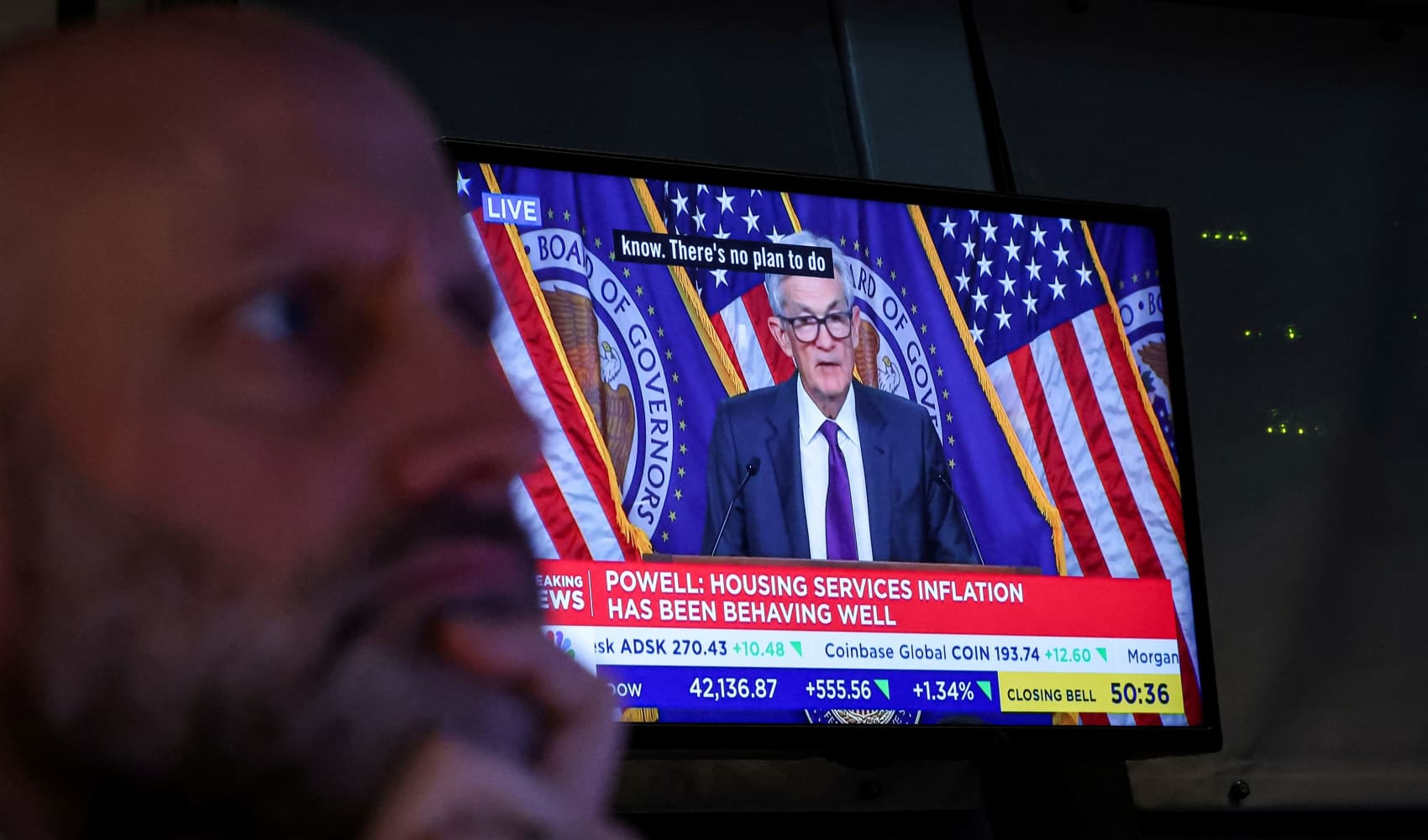Tariff Uncertainty: Is Pfizer Cutting U.S. Investment?
Tariff Uncertainty: Is It Chilling Pfizer's U.S. Investment?
Introduction: The Ripple Effect of Tariffs on Pharma Innovation
Ever wonder how global trade policies affect your medications? It’s not just about numbers and boardroom decisions; it’s about innovation, jobs, and ultimately, your access to life-saving drugs. Recently, Pfizer CEO Albert Bourla voiced concerns about how tariff uncertainty is impacting the company's appetite for further investments in U.S. manufacturing and research and development (R&D). Let's dive into what this means for the future of pharmaceuticals in America.
The Tariff Threat: A Cloud Over Pharmaceutical Investments
President Trump's planned pharmaceutical tariffs are casting a long shadow over the industry. The intent behind these levies is to encourage domestic manufacturing, but the reality is proving to be more complex. The question is, are these tariffs a necessary catalyst for American industry, or a stumbling block that could stifle innovation and growth?
Pfizer's Perspective: Numbers Don't Lie
Pfizer anticipates a $150 million hit this year alone due to existing tariffs. That’s a significant sum that could be channeled into R&D or expanding manufacturing capacity. Imagine what kind of groundbreaking research that amount could fund, or how many jobs it could create. It’s no wonder that uncertainty around future tariffs is making them hesitant to commit to new U.S. projects.
Bourla's Call: Clarity is Key
During the company's first-quarter earnings call, Bourla emphasized the need for clarity in tariff negotiations. What exactly does Pfizer want to see? Well, they need a stable and predictable trade environment. Without that certainty, long-term investment decisions become a high-stakes gamble.
Manufacturing in America: A Double-Edged Sword
On the one hand, bringing pharmaceutical manufacturing back to the U.S. sounds like a win-win. It creates jobs, reduces reliance on foreign suppliers, and could potentially lower costs. But on the other hand, imposing tariffs can increase the cost of raw materials and components, making it more expensive to manufacture drugs here in the first place.
The R&D Conundrum: Stifling Innovation?
R&D is the lifeblood of the pharmaceutical industry. Cutting back on research and development can have long-term consequences, delaying the development of new treatments and cures. Imagine the impact on patients waiting for breakthrough therapies. Is the promise of increased domestic manufacturing worth jeopardizing medical innovation?
H3: The Global Supply Chain: A Complex Web
Pharmaceutical manufacturing is a global enterprise, with intricate supply chains spanning multiple countries. Disrupting these chains can have unintended consequences, such as shortages of essential medicines or price increases. Tariffs can act like a wrench in the gears, causing disruptions that ripple throughout the entire system.
The Cost to Consumers: Who Ultimately Pays?
Ultimately, the cost of tariffs is often passed on to consumers. Higher drug prices can make essential medications unaffordable for many Americans. Is the goal to revitalize domestic manufacturing at the expense of patients' access to affordable healthcare? That's a question worth pondering.
Competitiveness Concerns: Leveling the Playing Field
Tariffs can also impact the competitiveness of U.S. pharmaceutical companies. If American manufacturers face higher costs due to tariffs, they may struggle to compete with foreign companies that aren't subject to the same levies. This could ultimately lead to a decline in U.S. market share and a loss of jobs.
H3: The Impact on Small and Medium-Sized Businesses
It's not just Pfizer that's affected by tariff uncertainty. Small and medium-sized pharmaceutical companies, which often rely on imported ingredients and components, may be particularly vulnerable. These businesses may lack the resources to absorb the cost of tariffs, potentially forcing them to cut jobs or even shut down.
Beyond Pharmaceuticals: A Wider Economic Impact
The impact of tariffs extends beyond the pharmaceutical industry. Uncertainty around trade policy can deter investment across various sectors of the economy, leading to slower growth and job creation. When businesses are unsure about the future, they're less likely to take risks and expand their operations.
The Political Landscape: A Shifting Sands
Trade policy is often influenced by political considerations. Changes in administration or shifts in political priorities can lead to sudden changes in tariffs and trade agreements. This makes it difficult for companies to plan for the long term and make informed investment decisions.
Alternatives to Tariffs: Exploring Other Options
Are tariffs the only way to encourage domestic manufacturing? Some argue that there are other, more effective, approaches. These could include tax incentives, infrastructure investments, and regulatory reforms that make it easier and more attractive to manufacture in the U.S.
H3: Investing in Education and Workforce Development
Another strategy is to invest in education and workforce development programs that train Americans for high-skilled jobs in the pharmaceutical industry. A well-trained workforce can be a major competitive advantage, attracting investment and fostering innovation.
A Global Perspective: Learning from Other Countries
Other countries have successfully attracted pharmaceutical manufacturing and R&D without resorting to tariffs. By studying their approaches, the U.S. can learn valuable lessons and develop more effective policies. Perhaps a collaborative approach, rather than a confrontational one, could yield better results.
The Future of Pharma: Navigating the Uncertainty
The pharmaceutical industry is facing a period of unprecedented change. Tariff uncertainty is just one of the many challenges that companies must navigate. To succeed in this environment, businesses need to be agile, adaptable, and willing to take calculated risks. The companies that can best manage these challenges will be the ones that thrive in the years to come.
Conclusion: A Delicate Balance
Pfizer CEO Albert Bourla's concerns highlight the delicate balance between encouraging domestic manufacturing and fostering innovation. While the intent behind tariffs may be laudable, the unintended consequences could be detrimental to the pharmaceutical industry and, ultimately, to patients. A clear, predictable, and collaborative approach to trade policy is essential to ensure a healthy and vibrant pharmaceutical ecosystem in the U.S.
Frequently Asked Questions (FAQs)
Here are some common questions about the impact of tariffs on the pharmaceutical industry:
- Q: What are pharmaceutical tariffs?
A: Pharmaceutical tariffs are taxes imposed on imported pharmaceutical products. They are often used to encourage domestic manufacturing by making imported goods more expensive.
- Q: How do tariffs affect drug prices?
A: Tariffs can increase the cost of imported ingredients and finished drugs, potentially leading to higher prices for consumers.
- Q: Why is Pfizer concerned about tariff uncertainty?
A: Uncertainty around future tariffs makes it difficult for Pfizer to plan long-term investments in U.S. manufacturing and R&D.
- Q: Are there alternatives to tariffs for boosting domestic manufacturing?
A: Yes, alternatives include tax incentives, infrastructure investments, and regulatory reforms.
- Q: How can I stay informed about changes in trade policy?
A: Stay informed by following news from reputable sources, monitoring government websites, and engaging with industry associations.

